Last updated: September 27, 2024
Article
Artist-in-Residence Exhibition 2024
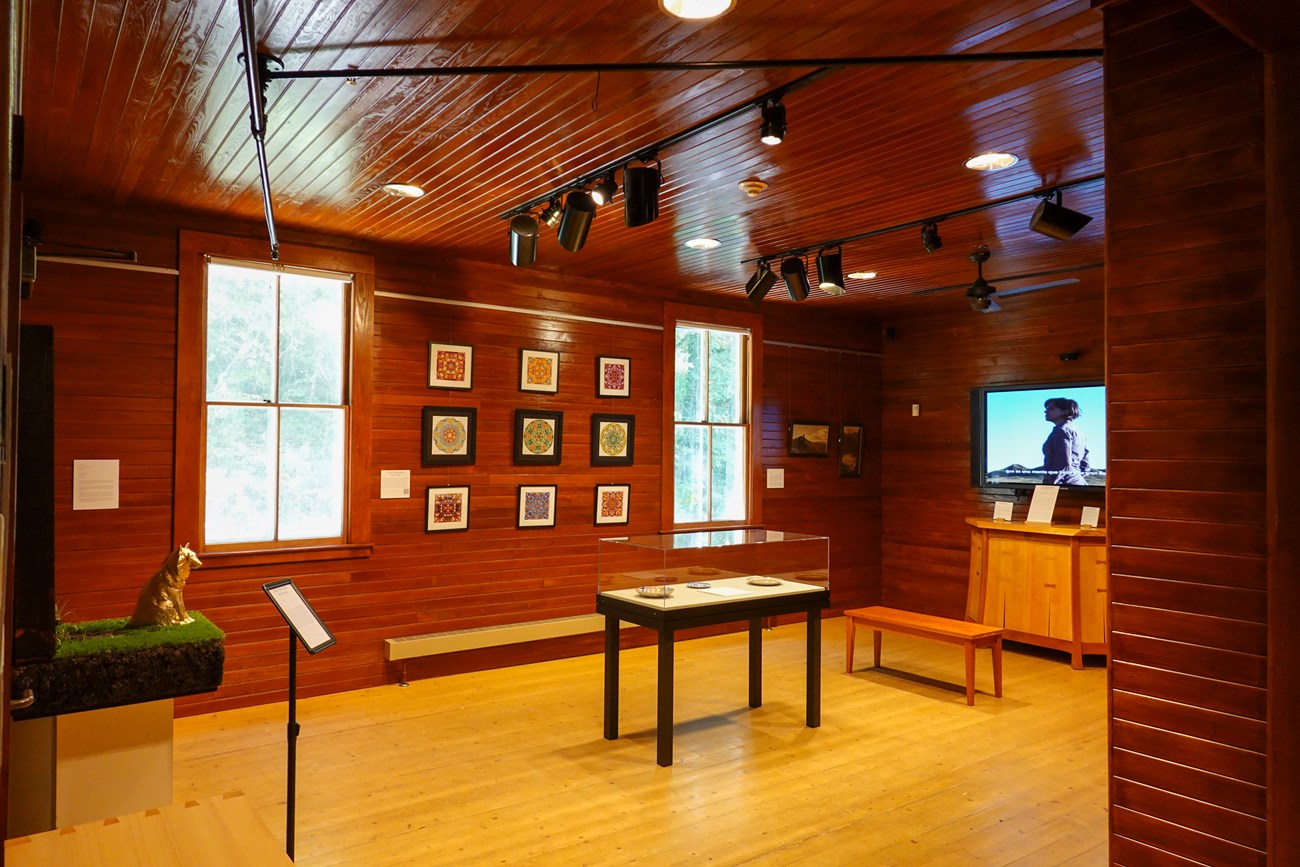
NPS Photo
Exhibit Now Open in the Marsh-Billings-Rockefeller National Historical Park Carriage Barn Visitor Center. This exhibit features work from three 2024 Artists-in-Residence, along with historical artwork from Mary and Laurance Rockefeller's collection. Exhibit will be open from September 21, 2024 to October 31, 2024.
Since their inception, national parks have been a source of inspiration for artists and art has been integral to the creation and preservation of parks. In the late 19th century, Hudson River School painters, such as Albert Bierstadt and Thomas Cole, captured majestic western landscapes and inspired a population far away to care about and advocate for the conservation of lands they had never visited. Today, national parks continue this artistic legacy through residency programs. The national historical parks in New Hampshire and Vermont are just two of over fifty that host artist residency programs across the country.
Marsh-Billings-Rockefeller National Historical Park in Woodstock, Vermont, was home to three families who played significant roles in the history and evolving nature of land stewardship and conservation in America. Preserved and displayed within the walls of their home is a collection of objects that reflect their love for the land and dedication to conservation, including many works by the artists who inspired the creation and preservation of national parks, such as Albert Bierstadt, Thomas Cole, and Carlton Watkins.
Saint-Gaudens National Historical Park in Cornish, New Hampshire, was created to preserve the home, studios, and gardens of sculptor Augustus Saint-Gaudens. While simultaneously forming the Cornish Colony, they all brought European artistic traditions and international recognition to America. His artwork, inspired by notable figures and the times events, is prominently displayed in the historic buildings and on the grounds.
Residency programs provide artists with an opportunity to immerse themselves in a park’s unique story and inspiring landscape and focus on their medium away from their everyday responsibilities. In turn, the artists enhance the interpretation of a park’s story through their art and engage the public through art in the park experiences. Begun in 1969, the Sculptor-in-Residence program at Saint-Gaudens National Historical Park is the oldest continual residency program among national parks. Meanwhile, founded in 2007, the Artist-in-Residence program Marsh-Billings-Rockefeller National Historical Park can include multiple artists.
In 2024, Amy Fortier, Christine Tyler Hill, and Ellen Smith Ahern were chosen as Artists-in-Residence for Marsh-Billings-Rockefeller National Historical Park; Davis Fandiño was selected as the Sculptor-in-Residence for Saint-Gaudens National Historical Park; and Wayne Carter and Emil O’Melia were picked as Student Artists-in-Residence representing both units. The exhibition features artwork from three artists who found inspiration from the national historical parks in New Hampshire and Vermont.
Within this article you can learn more about the dance film, posters, sculpture, and watercolors submitted by three of our Artists-in-Residence, complemented by objects from the Marsh-Billings-Rockefeller National Historical Park museum collection to further explore themes in their art. To coincide with the Woodstock community’s celebration of Laurance Rockefeller on the 20th anniversary of his passing, objects with an association to the Rockefeller family were purposefully chosen. The art and ceramics on display pay homage to Laurance and Mary Rockefeller’s important part in the conservation movement which influenced their art collection and support of their local community.
Amy Fortier
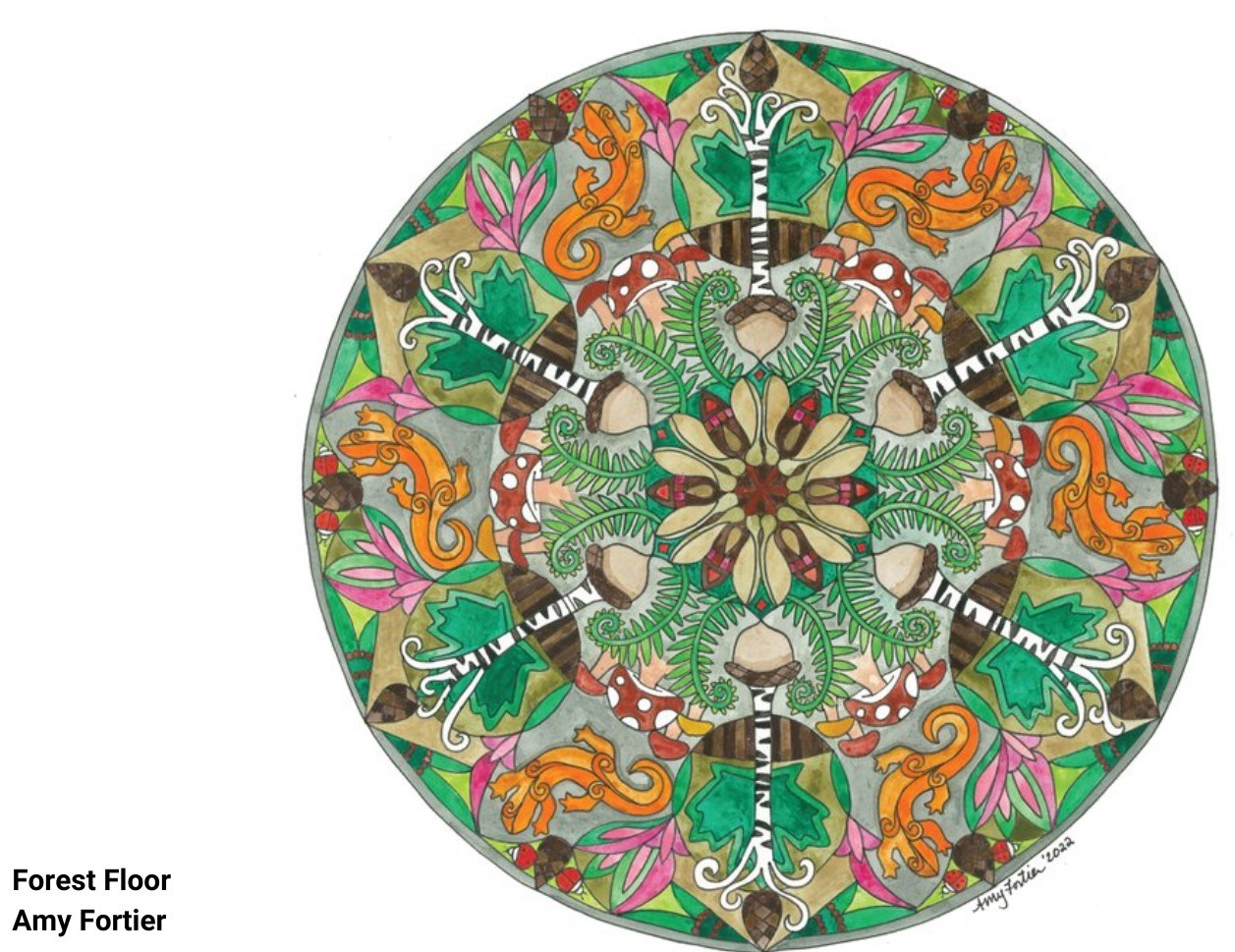
Amy Fortier

NPS Photo
These plates represent a variety of major types of Chinese export ceramics. They are a great sample of the Rockefeller’s larger collection and follow a similar geometric pattern, theme, and shape as Amy Fortier’s artwork. All of which reference the natural world. Look closely at the ceramics then the artwork on the wall. What natural elements and colors are similar?
Davis Fandiño
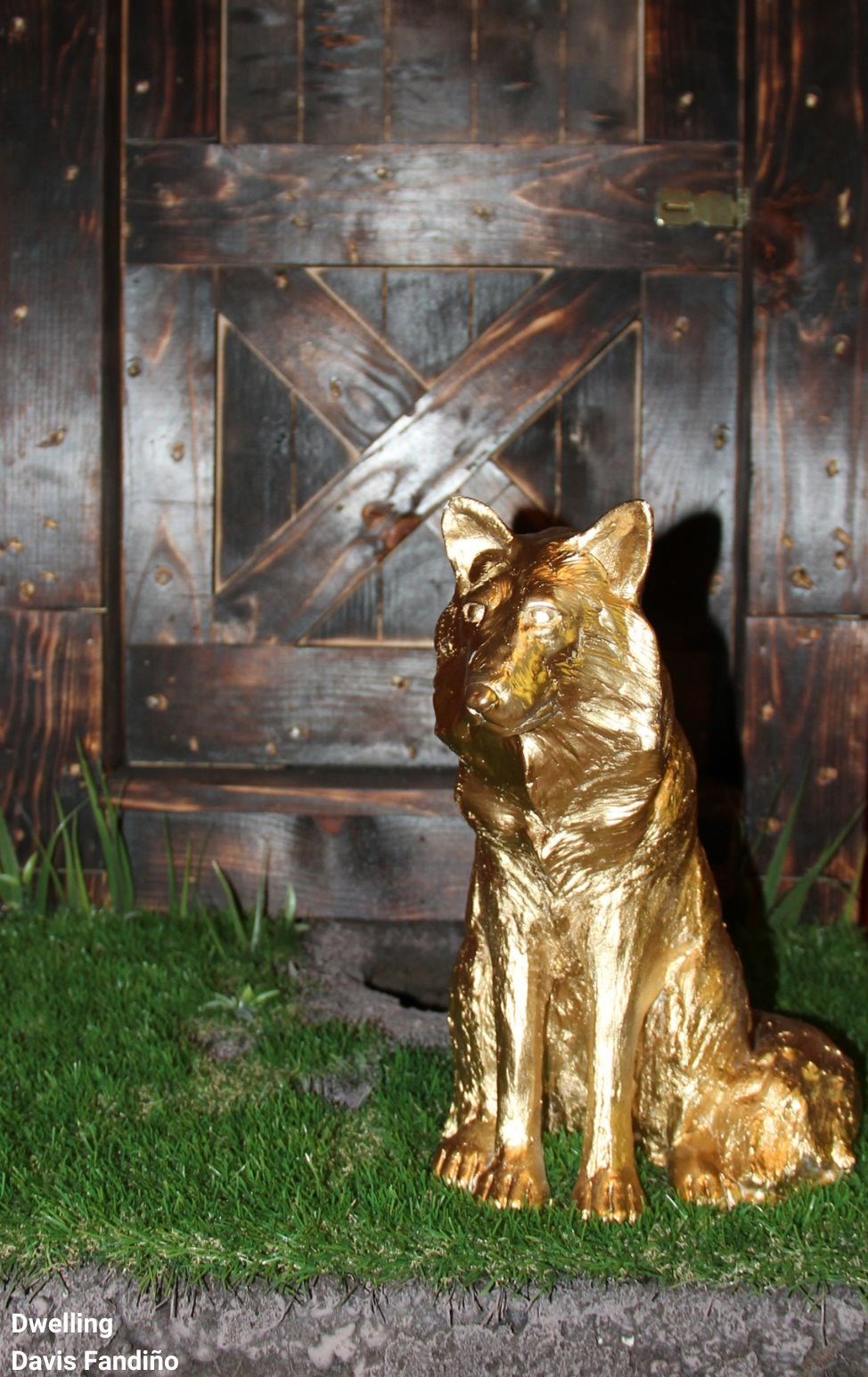
NPS Photo
"The present artwork is part of a body of work I have been developing as the 2024 Sculptor-in-Residence at Saint-Gaudens National Historical Park. In these sculptures and paintings, I aim to convey the feeling evoked in me by my time spent in the house and studios as well as walking the grounds of Augustus Saint-Gaudens’ former home. This feeling was overwhelmingly one of absence and empty spaces. However, absence and emptiness does not mean nothingness and desolation. It is the absence of a beloved person; the emptiness of rooms once filled with life. In this absence and emptiness there is the memory of presence and completeness. Here is represented the door of the stable boy’s quarters at the park. Long empty it has become the entrance to a den of foxes that have made a home beneath the stables. The real-life fox is a temporary inhabitant and intruder much like myself or anyone else who spends time at the park. This sculpture represents a spirit made material like the sculptures that populate the grounds."
- Davis Fandiño
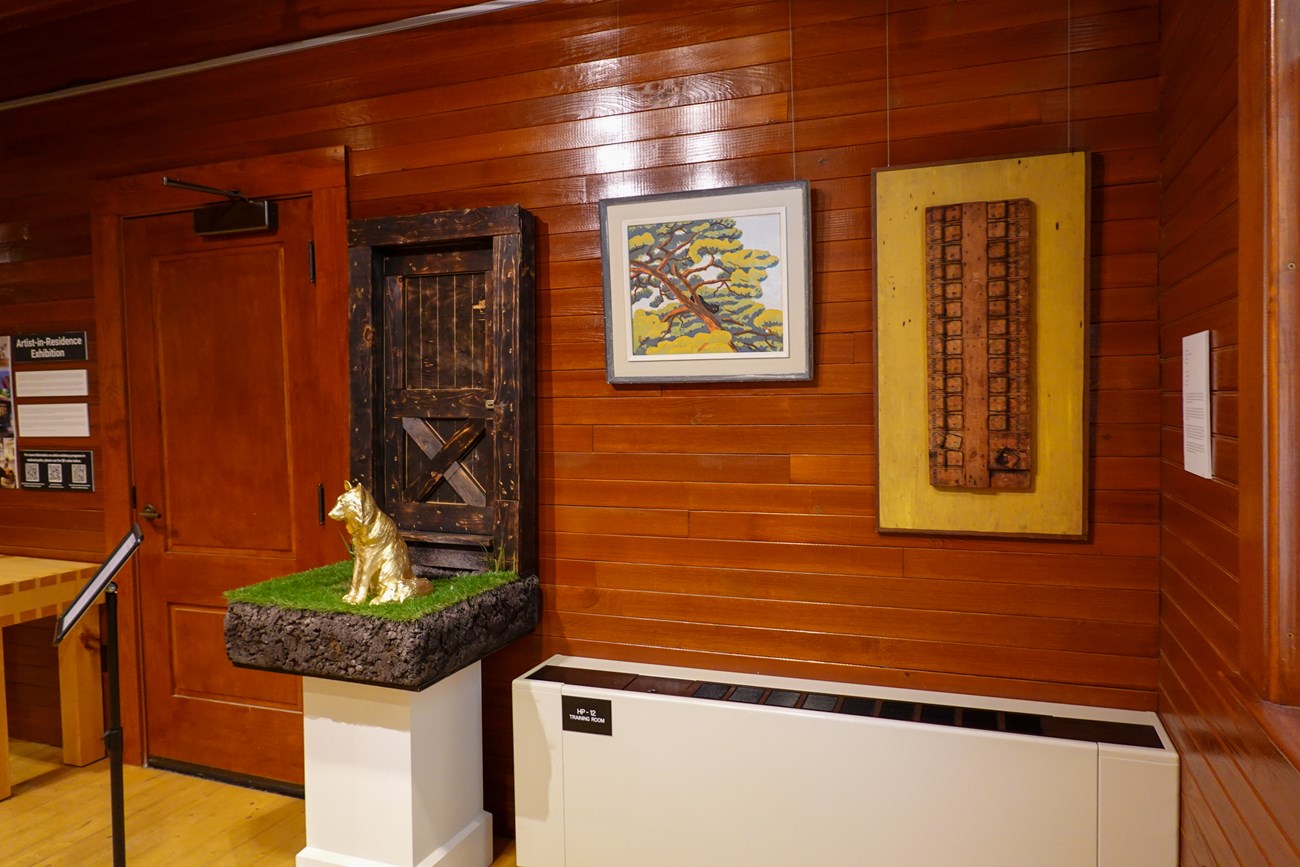
NPS Photo
To go deeper into the background of the foxes that inspired the piece, Black Cat in Cypress Tree and Board Meeting are a small sample of the modern art that Laurance and Mary Rockefeller were drawn to collecting. Typically, Laurance and Mary tried to follow the times popular collecting trends, but also sought out local and modern art.
Much like a cat in a tree, a den of foxes taking up residence underneath a historic structure is not the animal’s natural habitat. Cats often run up trees out of fear then struggle to come down because of their claws. However, both the cat depicted in Black Cat in Cypress Tree and the foxes may be a bit too comfortable.
Foxes are often drawn by sources of food such as mice which are common in historic structures, but by occupying them the foxes can also cause damage. Unlike with a cat stuck in tree, it is not as simple as climbing a ladder to return the foxes to their natural habitat. Traps like those incorporated into Board Meeting are a humane way to mitigate mice, but inappropriate for foxes.
To ensure wildlife keeps a safe distance from humans, alternative methods like intimidating them or startling them will be done by trained professionals. This tactic not only benefits the animals and keeps them safe but reduces the number of human and wildlife interactions.
Ellen Smith Ahern

Ellen Smith Ahern and Kate Elias
"As dance artists, social workers and mothers of young kids, we make work at the intersections of movement, storytelling and nature. We’re curious about how dance making can be a journey for both the dancers and the viewers - can we relate to one another's stories and bodies? Can we build worlds together that neither exclude nor confine? Can traces and echoes of these worlds follow us out into our daily lives, infusing them with humor and unexpected color?
We explore these questions through live performances and dance films, which we share in schools, community centers, arts walks, public parks, theaters, and film festivals. With respect to all the folks that make our work possible, we seek out venues that serve as community hubs, including a wider array of people than might otherwise feel welcomed into traditional dance spaces. Using movement, natural imagery and sound as threads that bind human and nonhuman worlds and explore relationships between the two, our creative process often engages a wide array of community members sharing diverse perspectives. We try to craft a final product that is as accessible and inclusive as possible, that approaches representation with both a sense of experimental play and deep respect for participants. Making Clear Creek was a multi-year process that offered us a ton of growth as artists and people. In residency on the Ucross Foundation ranch, we learned that taking dance out of studios into wild spaces transforms and deepens it. We were honored with stories from community members there, taking on the responsibility of respectful representation. We collaborated with multiple communities to install the film publicly, learning much in the challenging process of creating participatory spaces for diverse groups and translating Spanish subtitles for increased accessibility. We've returned full circle and are still building a relationship with folks on the Crow reservation nearest to our WY filming sites, crafting a land acknowledgement, directing viewers' support to their own community work and planning a screening of the dance film in a cafe on the reservation. We’re proud of this circle, especially the challenges it's held."
-Ellen Smith Ahern
Clear Creek | Arroyo Claro (2019) follows two women as they dance through iconic western images, from dust storm to shoot out, creek bed to endless horizon. Inviting viewers to feel space and distance, taste dust and wind, and empathize with moving bodies, Clear Creek offers a portrait of home, land and memory as illuminated by the voices of a rural Wyoming community. The featured voices represent perspectives from ranching, teaching, rangeland conservation and life within the Crow Nation. Created by dance artists Ellen Smith Ahern and Kate Elias with filmmaker Tori Lawrence, Clear Creek has been screened at the National Gallery of Art and Dance on Camera Festival/Film at Lincoln Center, as well as in community centers and film festivals throughout the US and Canada, receiving awards from Yonkers Film Festival 2020, Experimental Forum 2020 and Thomas Edison Film Festival 2022.
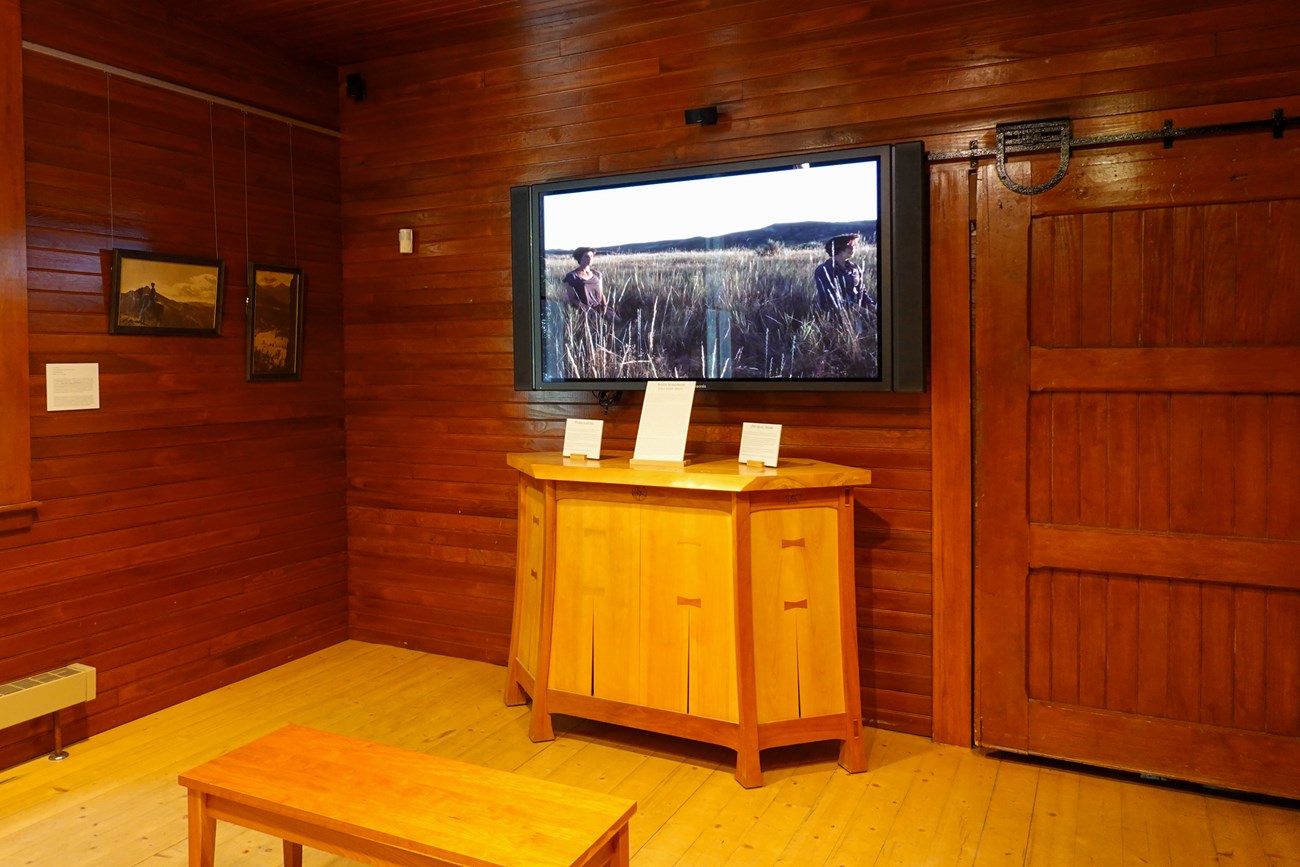
NPS Photo
Art can be a powerful tool to advocate for land conservation. Paired with Ellen’s video, these photographs by Susan Thew depict landscapes within the boundaries of what is known today as Grand Tetons National Park in Wyoming. That state is not the only connection to Clear Creek | Arroyo Claro (2019) submitted by Ellen Smith Ahern. All ask the audience to consider what can be told from that landscape. Celebrated photographer Susan Thew focused on the majestic Teton Range to preserve and protect it. As a result of this and her other ventures, she created an expansive photographic record of the western landscape. Throughout Thew’s lifetime she served as a proponent for land conservation using her photographs alongside other artists such as Ansel Adams.
Throughout the generations, the Rockefeller Family contributed to 19 different national parks. Following in his father’s philanthropic footsteps specifically at Grand Teton National Park, Laurance continued to focus efforts on that setting and others. He also founded RockResorts to encourage recreation in national parks, for example the Woodstock Inn & Resort nearby. Laurance inherited Thew’s photographs from his father, a gift from a Director of the National Park Service. They serve as a reminder of the importance of land stewardship.
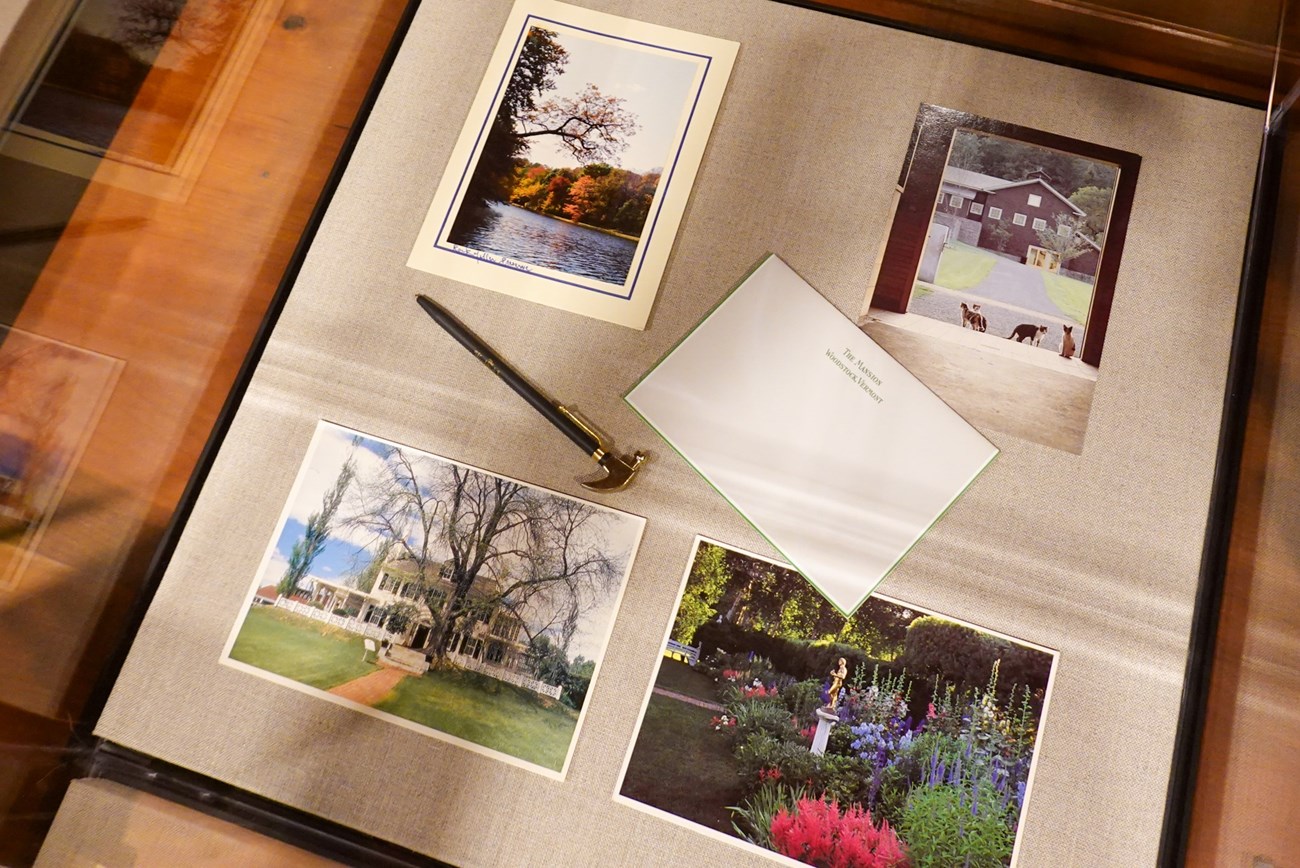
NPS Photo
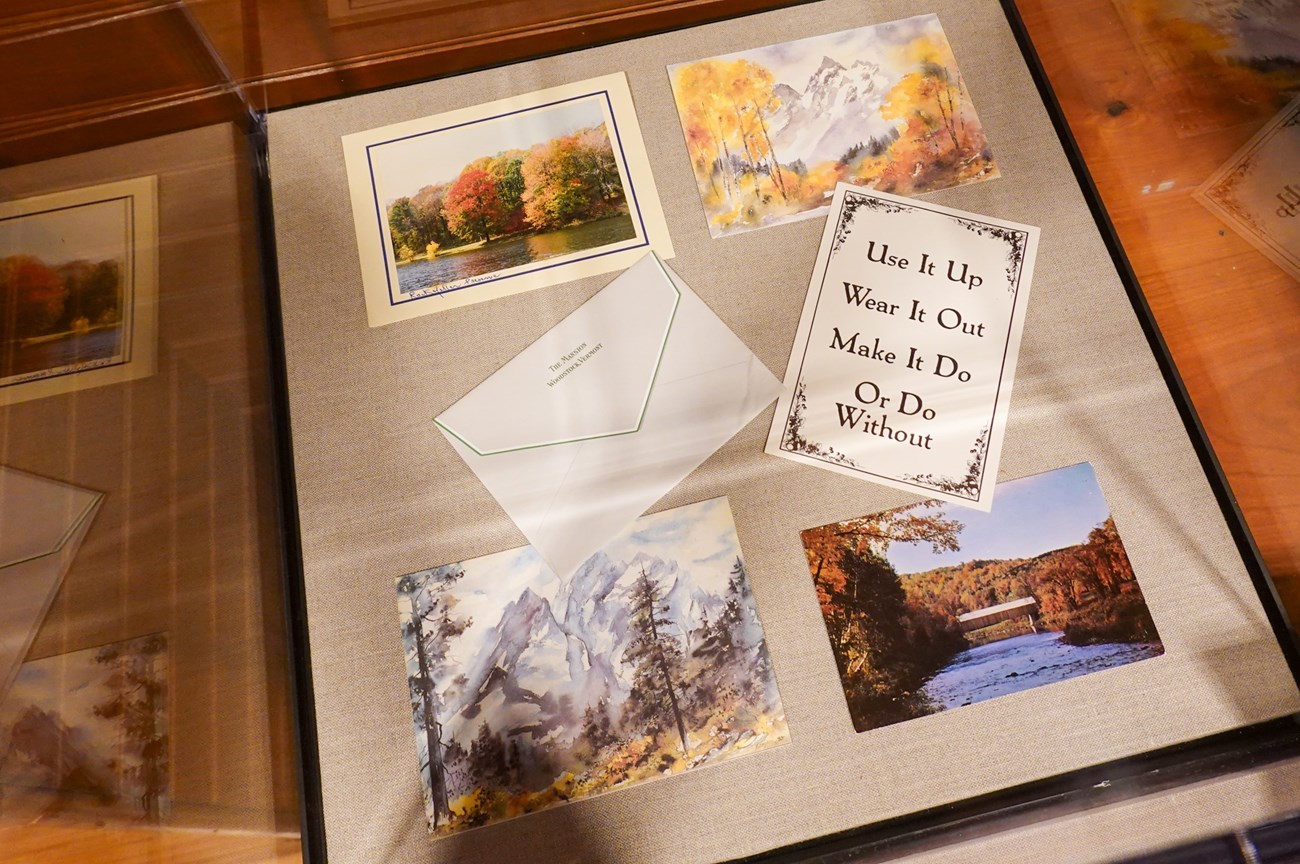
NPS Photo
To tie all of the art and objects together, these postcards are a selection of the many that reside inside the desk of Mary Rockefeller, which is exhibited in the Mansion’s Library at Marsh-Billings-Rockefeller National Historical Park. The postcards depict the same or similar historical sites that inspired the artists in residency and the paired objects from the museum collection which connect to the Rockefeller Family’s interests. Featured in this exhibit is a pen from the Woodstock Inn & Resort alongside a postcard from Billings Farm & Museum, which are the two other institutions celebrating the Laurance Rockefeller Memorial Celebration. The saying “Use it up. Wear it out. Make it do. Or do without.” was a popular phrase during the Great Depression about upcycling and seems to be a favorite of the Rockefellers featured throughout the rooms most often used in the Belvedere and Mansion.
Mary collected these postcards that inspired her and sent them to inspire others to aid in conservation. How can you inspire others to help conserve natural and cultural resources?
